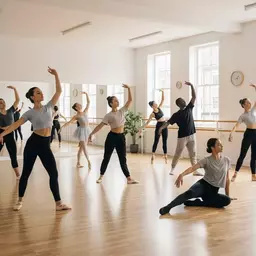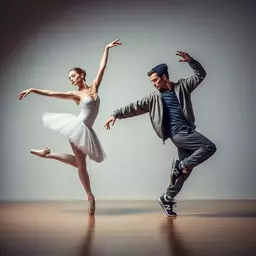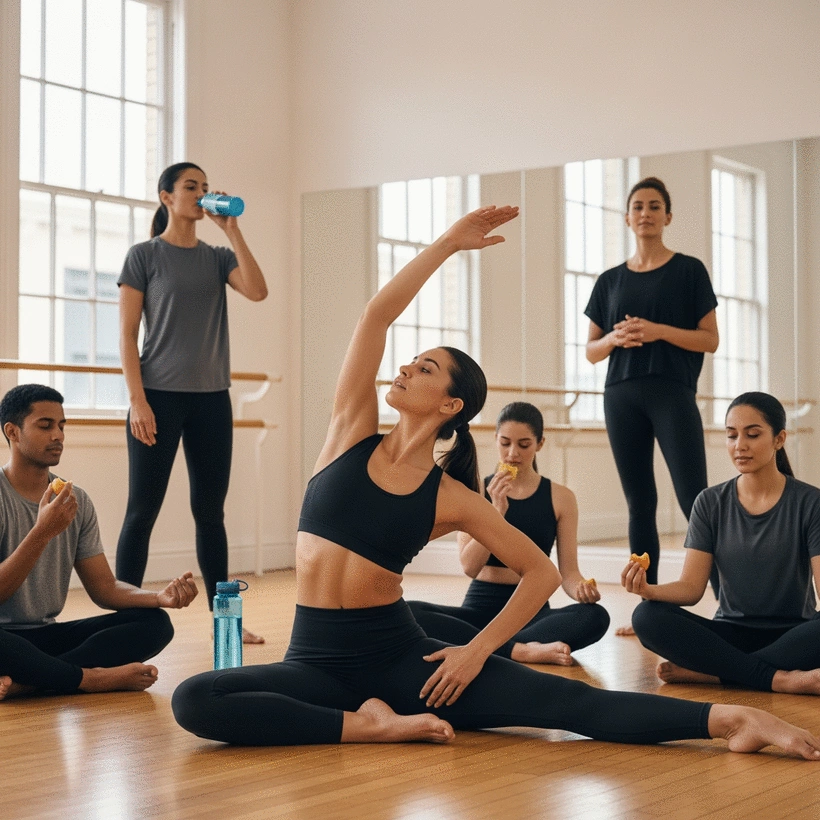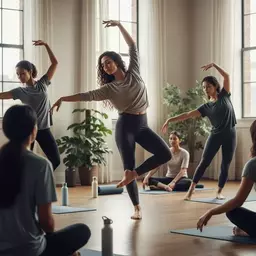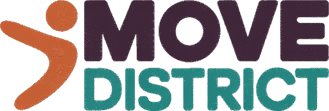Selecting Your Ideal Dance Class
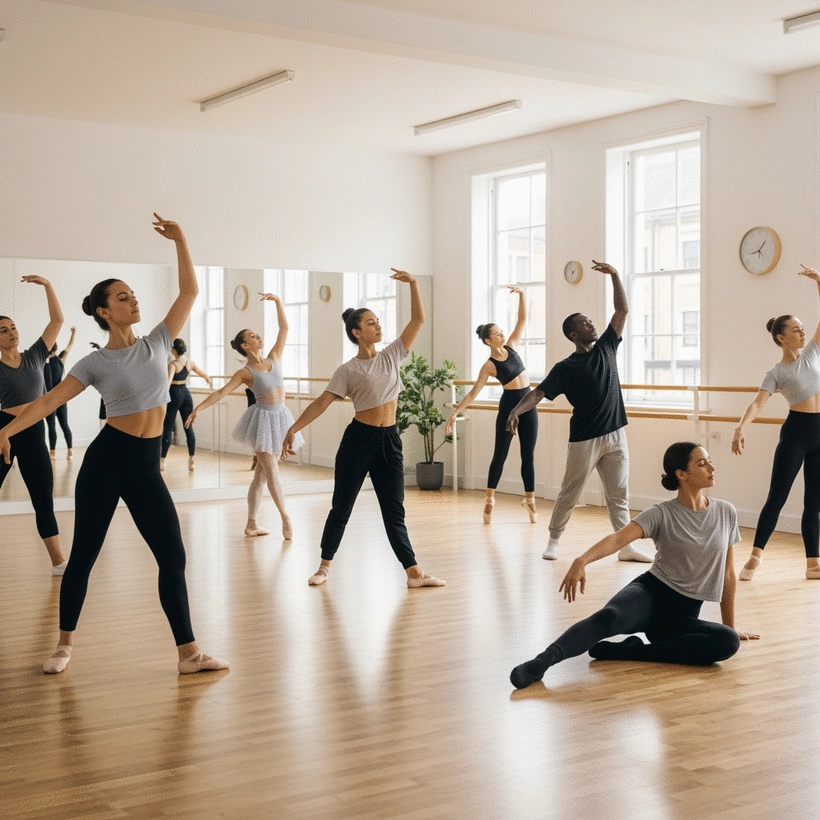
Setting out on your dance journey is both exciting and transformative. Did you know that understanding your current skill level can significantly enhance your learning experience? This guide will help you navigate through your dance training with confidence and clarity.
What You Will Learn
- Identify your current dance proficiency level: beginner, intermediate, or advanced.
- Utilize self-assessment techniques to recognize your strengths and areas for improvement.
- Understand the value of formal dance assessments for tracking your progress.
- Clarify your personal dance goals to align your journey with your aspirations.
- Explore trial classes to discover different styles and instructors without long-term commitments.
- Connect with local studios for personalized guidance tailored to your goals.
- Engage with dance communities to build a supportive network and enhance your experience.
- Track your progress and celebrate achievements to stay motivated and inspired.
Dance Journey Levels and Next Steps
This visual outlines the three core proficiency levels in dance and essential next steps for every dancer's journey, from self-assessment to community engagement.
Skill Level Assessment
Understanding your current dance proficiency is key for growth.
- Beginner: Basic movements.
- Intermediate: Foundational techniques.
- Advanced: Highly skilled, various styles.
Self-Assessment Techniques
Tools to identify strengths and areas for improvement.
- • Record yourself dancing.
- • Ask for instructor feedback.
- • Reflect on choreography comfort.
Taking Next Steps
Embark on your journey with manageable and insightful actions.
- • Attend trial classes.
- • Connect with local studios.
- • Engage with dance communities.
Empowering Your Experience
Reflect, track, and celebrate to fuel your dance passion.
- • Make informed choices.
- • Reflect on goals.
- • Track progress & celebrate.
Understanding Your Skill Level in Dance
As you embark on your dance journey, understanding your current skill level is essential. Knowing where you stand helps you identify the right classes and styles that suit your needs. Whether you're just starting or looking to refine your technique, this self-awareness is a key component to your growth as a dancer.
Let’s dive into how you can assess your skills and make informed decisions about your dance training!

Identifying Your Current Dance Proficiency
Every dancer has a unique story and background that shapes their proficiency. To help categorize where you might fit, I often think in terms of three main levels: beginner, intermediate, and advanced. For those looking to explore a variety of movements, understanding the art of mastering diverse dance styles can be incredibly beneficial early in their journey.
- Beginner: New to dance, focusing on basic movements and gaining confidence.
- Intermediate: Familiar with foundational techniques and eager to explore more complex choreography.
- Advanced: Highly skilled in various styles, often participating in performances or competitions.
Understanding these levels allows you to set realistic expectations for your practice and align with the right instructors at Move District!
Self-Assessment Techniques for Dance Skills
Self-assessment can be a powerful tool for recognizing your dance strengths and areas for improvement. Here are a few techniques I recommend:
- Record yourself dancing and analyze your movements.
- Ask for feedback from instructors or fellow dancers.
- Reflect on your comfort level with choreography and technique.
By using these techniques, you can gain a clearer picture of your proficiency and what steps you might take next in your dance journey.
Dance Assessments: Evaluating Your Progress
Formal dance assessments can provide additional insight into your skills. Many studios, including Move District, offer opportunities for dancers to participate in assessments that evaluate technique, performance, and creativity.
- Assessments can be beneficial for tracking progress over time.
- They provide a structured environment to receive constructive feedback.
- Participation can open doors for scholarships or advanced training opportunities.
Consider scheduling an assessment to see how far you've come and what areas to focus on moving forward!
Clarifying Your Personal Dance Goals
Once you have a clear understanding of your skill level, the next step is to clarify your personal dance goals. Whether you're seeking fitness, social connection, or pursuing a career, setting defined objectives can enhance your experience in dance.
Let’s explore how to align your aspirations with your dance journey at Move District!
Interactive Poll: How Do You Assess Your Dance Skills?
As you reflect on your dance journey, we’d love to know: What method do you find most effective for assessing your dance skills?
Taking the Next Steps for Your Dance Journey
Starting your dance journey can feel overwhelming, but let’s break it down into manageable steps! Attending trial classes is a fantastic way to dip your toes into different styles and find what resonates with you. Each trial class offers a unique experience that can help you gauge your interest and comfort level in various dance forms.
Have you ever walked into a new space and felt that instant spark of excitement? That’s the magic of dance! When considering your next steps, think about how these classes can ignite your passion for movement.
Encouragement to Attend Trial Classes
Trial classes are your golden opportunity to explore different instructors and styles without a long-term commitment. Here’s why they are vital to your journey:
- Discover your preferred teaching style and class atmosphere.
- Meet fellow dancers and build your initial support network.
- Assess how the dance studio vibes resonate with you.
Don’t underestimate the value of trying a class or two; it’s not just about learning steps but also about feeling connected to the art of dance!
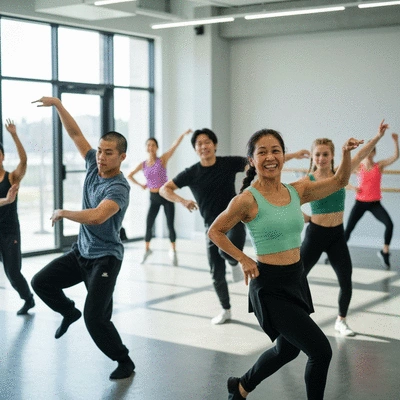
Connecting with Local Studios for Personalized Guidance
When you're ready to dive deeper, connecting with local studios can provide personalized guidance tailored to your goals. Most studios, like Move District, emphasize building a community where dancers can flourish. Here are some ways to engage:
- Schedule one-on-one consultations with instructors.
- Attend studio open houses to explore facilities and meet faculty.
- Inquire about customized training programs that fit your skill level.
Finding the right fit is crucial for your growth as a dancer, so feel free to ask questions that will help shape your learning experience!
Engaging with Dance Communities for Support and Networking
Dancing is not just a solo journey; it's about community and connection. Engaging with local dance communities can provide you with invaluable support. Here’s how to get involved:
- Join dance clubs or local meetups focused on your style of interest.
- Participate in online forums or social media groups dedicated to dance.
- Attend workshops and events that promote networking with other dancers.
These connections can inspire you and offer insights into your dance journey. Remember, there’s strength in numbers—dance with those who encourage and uplift you!
Empowering Your Dance Experience
Throughout this journey, it’s important to empower yourself with the right tools and knowledge. Using this guide can help you make informed choices that align with your aspirations. Reflecting on your goals regularly can keep you motivated and on track.
Have you thought about how each choice you make contributes to your growth? Taking a moment to visualize your future as a dancer can be incredibly powerful!
Using This Guide to Make Informed Choices
This guide is your companion, helping you navigate through various options and decisions. Here are some tips for utilizing it effectively:
- Identify your top priorities in dance—what excites you the most?
- Refer back to sections that resonate with your current needs.
- Keep notes on your experiences and thoughts after trial classes.
By keeping your personalized goals at the forefront, you’ll be equipped to embrace your dance journey fully!
Invite to Reflect on Your Goals and Preferences
Reflection is a powerful tool in any artistic journey. Take some time to think about why you dance and what you want to achieve. Here are some reflection prompts:
- What emotions does dance evoke in you?
- How do you envision your progress over the next year?
- What steps will you take to stay committed to your dance practice?
These questions will help solidify your intentions and set a clear path toward your aspirations in dance.
Tracking Your Progress and Celebrating Achievements in Dance
Tracking your progress is crucial! Celebrate each achievement, no matter how small. Here are some ways you can do this:
- Maintain a dance journal to document your experiences.
- Record video footage of your dance practice to see your evolution.
- Share milestones with your dance community for encouragement.
By recognizing how far you’ve come, you’ll fuel your motivation and inspire others in the dance community. Remember, every dancer's journey is unique—embrace yours!
Frequently Asked Questions (FAQs)
Here are some common questions about assessing your dance skill level and progressing in your dance journey:
- Q1: Why is it important to know my dance skill level?
- A1: Knowing your skill level helps you choose appropriate classes, set realistic goals, and find the right instructors, which significantly enhances your learning experience and growth as a dancer.
- Q2: How can I self-assess my dance skills?
- A2: You can self-assess by recording yourself dancing and analyzing your movements, asking for feedback from instructors or peers, and reflecting on your comfort level with different choreographies and techniques.
- Q3: What are the main dance proficiency levels?
- A3: The main proficiency levels are Beginner (basic movements, gaining confidence), Intermediate (familiar with foundational techniques, exploring complex choreography), and Advanced (highly skilled in various styles, often performing or competing).
- Q4: What is the benefit of formal dance assessments?
- A4: Formal dance assessments provide structured feedback, help track progress over time, and can open doors to advanced training or scholarship opportunities.
- Q5: How do trial classes help in my dance journey?
- A5: Trial classes allow you to explore different dance styles and instructors without long-term commitment, helping you discover your preferred teaching style, class atmosphere, and what truly resonates with your passion for movement. Consider taking dance classes and workshops in Australia to explore various options.
Recap of Key Points
Here is a quick recap of the important points discussed in the article:
- Identify Your Skill Level: Understanding whether you are a beginner, intermediate, or advanced dancer is crucial for setting realistic goals and finding suitable classes.
- Utilize Self-Assessment: Record your practice, seek feedback, and reflect on your comfort with techniques to better understand your proficiency.
- Engage in Formal Assessments: Participate in dance assessments to track your progress, receive feedback, and explore advanced opportunities.
- Set Personal Dance Goals: Define what you wish to achieve through dance, such as fitness, social connection, or a professional career.
- Attend Trial Classes: Explore different styles and instructors without a long-term commitment to find what resonates with you.
- Connect with Local Studios: Seek personalized guidance and inquire about customized training programs tailored to your skill level.
- Engage with Dance Communities: Join clubs, attend workshops, and participate in online forums to build a supportive network.
- Track Your Progress: Maintain a dance journal, record your practice, and celebrate your achievements to stay motivated.

